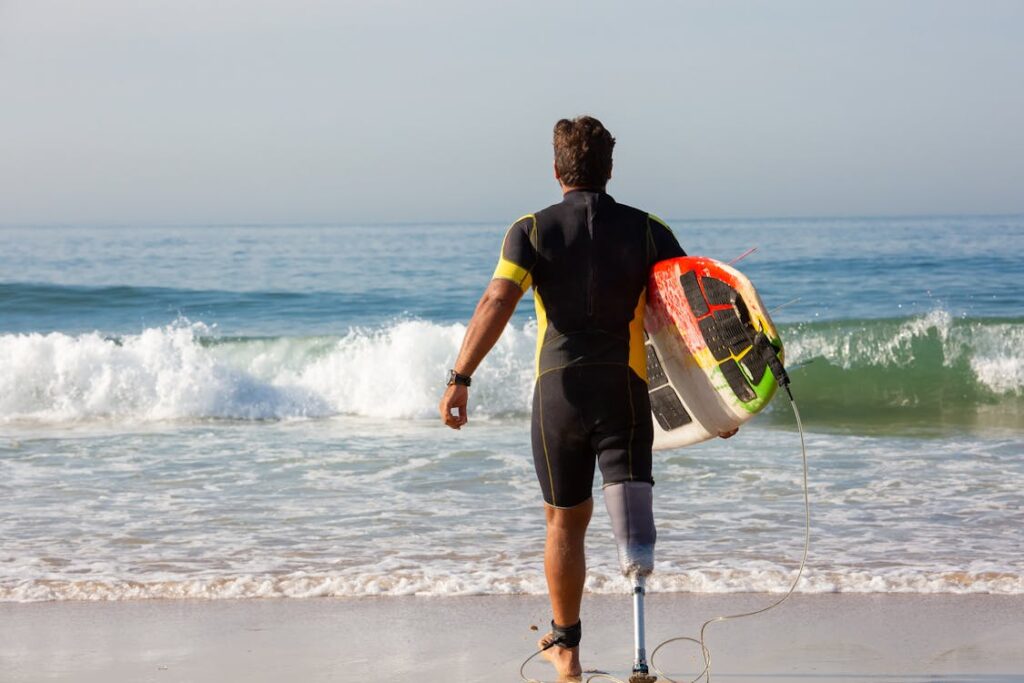Bionic prosthetic limbs have transformed the way people with limb loss move and interact with the world. Unlike traditional prosthetics, which are often limited in function, bionic limbs use advanced technology to offer more natural movement and control. But with all this innovation, a common concern remains—how well do these prosthetics handle real-life conditions?
Water exposure, impact resistance, and overall durability are major factors that affect how practical a bionic limb is for daily life. Whether it’s walking in the rain, washing hands, or engaging in physical activities, users need a prosthetic that can keep up with their lifestyle. While some bionic limbs are built to withstand water and rough use, others require careful handling to avoid damage.
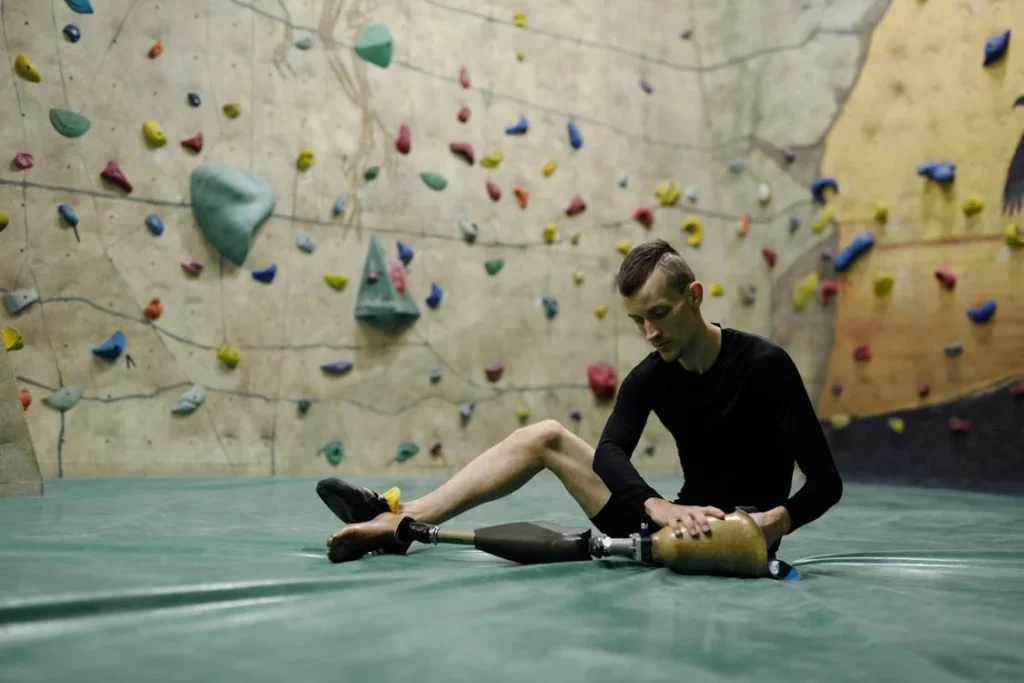
Understanding the Durability of Bionic Prosthetic Limbs
Bionic prosthetic limbs are built with advanced materials and engineering to ensure they can handle everyday activities. However, their durability depends on several factors, including the type of prosthetic, the materials used, and the specific design features.
Unlike traditional prosthetics, which are often made from simple plastics and metal components, bionic limbs incorporate electronic sensors, motors, and microprocessors. These features allow for more precise movement but also introduce components that require extra care.
Materials That Make Bionic Prosthetics Strong
Manufacturers design bionic limbs with durability in mind, using a combination of lightweight yet strong materials. Carbon fiber is a popular choice because it provides a high strength-to-weight ratio, making the limb sturdy while keeping it light enough for comfortable use.
Titanium is another common material, known for its exceptional resistance to bending, cracking, or rusting. Some parts of bionic limbs, especially those exposed to frequent movement and weight-bearing, are reinforced with aluminum alloys or impact-resistant polymers.
While these materials make the structure of a bionic limb highly durable, the electronic components inside require protection. Sensors, wiring, and battery systems are usually encased in sealed compartments to prevent exposure to moisture, dust, and physical shocks.
However, not all bionic limbs have the same level of durability, and some models are designed for everyday use rather than extreme conditions.
How Bionic Limbs Handle Impact and Pressure
The durability of a bionic prosthetic is often tested through real-world activities. Walking, running, lifting objects, and even minor accidental bumps should not cause significant damage.
Many modern bionic limbs undergo rigorous testing to ensure they can handle daily stress without malfunctioning. Some models are specifically built for active users who engage in sports, providing extra reinforcement to withstand higher levels of impact.
However, there are limits to how much pressure a bionic limb can handle. High-impact activities like heavy weightlifting, rock climbing, or contact sports may require specialized prosthetics designed for those specific needs.
For most users, regular movement, exercise, and moderate physical activities pose no risk to their prosthetic limb’s durability.
The joints and moving parts of a bionic limb are particularly important in determining long-term durability. High-quality prosthetics use precision-engineered joints that mimic natural movement while reducing wear and tear.
These joints are often coated with protective layers to minimize friction, ensuring they continue to function smoothly over time.
Protection Against Everyday Hazards
Daily life presents many challenges for bionic prosthetic users, from sudden weather changes to exposure to dust, dirt, and accidental drops.
While the outer shell of a prosthetic is designed to resist minor scratches and impacts, certain parts—such as exposed wiring, sensors, and battery compartments—require additional care.
Most bionic limbs include protective coverings that shield electronic components from potential damage. These covers are made from durable, non-slip materials that help users maintain a firm grip on objects and provide extra resistance to wear.
Some models even come with interchangeable covers, allowing users to swap them out when they experience signs of wear.
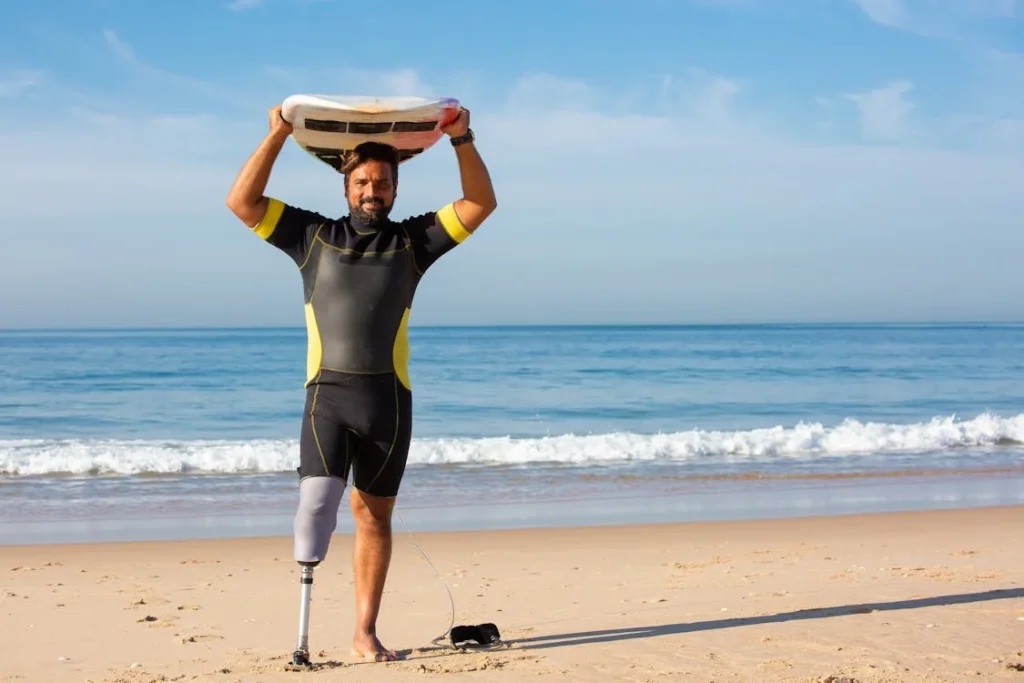
Are Bionic Prosthetic Limbs Waterproof?
Water resistance is one of the biggest concerns for bionic prosthetic users. Everyday activities like washing hands, walking in the rain, or sweating during exercise expose prosthetics to moisture.
While some bionic limbs are designed to handle light water exposure, others require strict precautions to avoid damage. The level of waterproofing varies depending on the model, manufacturer, and intended use.
Understanding Water Resistance Ratings
To determine how much water a bionic prosthetic can handle, manufacturers often use Ingress Protection (IP) ratings. These ratings indicate how well a device is protected against dust and water.
A prosthetic with an IP rating of IP67, for example, means it is dust-tight and can withstand temporary submersion in water. On the other hand, an IPX4 rating means it is resistant to splashes but not full immersion.
Many standard bionic limbs are water-resistant rather than fully waterproof. This means they can handle occasional splashes or light rain but should not be submerged in water.
A quick accidental spill or light sweat won’t harm them, but activities like swimming, showering, or prolonged exposure to humidity can cause damage to the electronic components inside.
For users who require full waterproofing, specialized bionic limbs are available. Some advanced models are designed for swimming and can function even when submerged.
These prosthetics are built with sealed enclosures that prevent water from reaching delicate circuits and motors. They also use corrosion-resistant materials to prevent rust or deterioration over time.
However, fully waterproof bionic limbs are not as common and are often more expensive than standard models.
Everyday Activities and Water Exposure
Since not all bionic limbs are waterproof, users need to be mindful of their daily routines. Simple tasks like washing hands or doing household chores that involve water require extra caution.
Some prosthetic users wear protective covers when engaging in activities where water exposure is unavoidable. These covers are made from waterproof materials and act as an extra barrier to keep moisture out.
Rain and humidity are other factors that users should consider. A sudden downpour while walking outside may not cause immediate damage, but prolonged exposure to wet conditions can affect sensitive parts of a bionic limb.
Wiping down the prosthetic after being in a humid or wet environment helps maintain its longevity.
For individuals who enjoy swimming or other water-based activities, switching between prosthetics might be the best option. Some users have one bionic limb for daily wear and another designed specifically for water-based use.
While this approach requires an additional investment, it allows greater flexibility and ensures that no prosthetic is exposed to conditions it wasn’t built to handle.
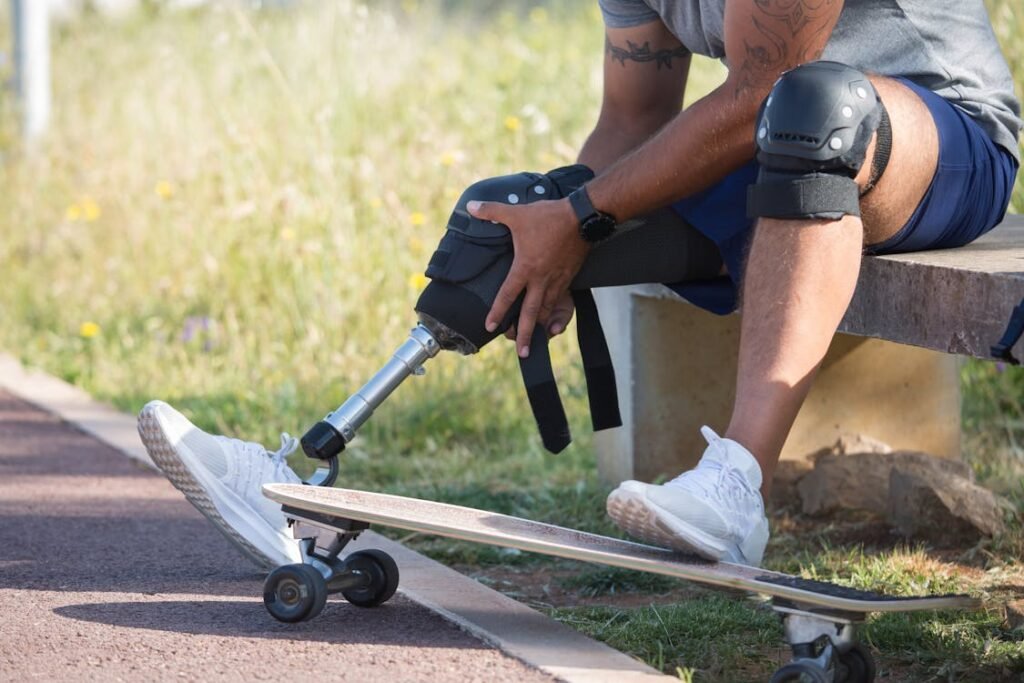
How to Maintain and Extend the Lifespan of a Bionic Prosthetic
Taking proper care of a bionic prosthetic limb is essential for ensuring long-term durability and reliable performance.
While modern prosthetics are designed to withstand everyday use, regular maintenance plays a crucial role in preventing damage from wear, water exposure, and environmental factors.
Understanding how to care for a bionic limb can help users avoid costly repairs and prolong the life of their device.
Cleaning and Daily Care
Keeping a bionic prosthetic clean is one of the simplest yet most effective ways to maintain its functionality. Dust, sweat, and dirt can accumulate over time, especially in joints and sensor areas.
Cleaning the prosthetic regularly with a soft, dry cloth prevents buildup and keeps moving parts functioning smoothly.
For areas that require deeper cleaning, a slightly damp cloth with mild soap can be used, but direct exposure to water should always be avoided unless the prosthetic is specifically rated as waterproof.
The socket, where the limb connects to the body, is another area that requires attention. Since this part comes into direct contact with the skin, it can collect sweat and bacteria.
Wiping it down daily with a sanitizing wipe or mild disinfectant helps maintain hygiene and prevents irritation or skin infections. Ensuring that the socket remains dry before wearing the prosthetic again is equally important to prevent discomfort.
Protecting Electronic Components
Bionic limbs rely on advanced electronic systems, including microprocessors, sensors, and motors, to function effectively. These components are housed in protective casings, but exposure to extreme temperatures, moisture, and impacts can still pose a risk.
Users should avoid leaving their prosthetic in hot environments, such as inside a car on a sunny day, as excessive heat can affect battery performance and internal circuits. Cold temperatures can also impact battery life, causing the prosthetic to lose power more quickly.
Water exposure remains one of the greatest risks to electronic prosthetics. Even if a limb is water-resistant, it’s always best to dry it immediately if it comes into contact with moisture.
For users who engage in activities where water exposure is common, such as working outdoors or cooking, using a protective waterproof sleeve can add an extra layer of defense.
Battery Care and Charging Best Practices
Since most bionic limbs are powered by rechargeable batteries, proper battery care is essential for optimal performance. Charging the prosthetic according to manufacturer recommendations prevents battery degradation over time.
Allowing the battery to drain completely before recharging can reduce its lifespan, so it’s best to keep it charged within the recommended range.
Storing a prosthetic with a partially charged battery when not in use for extended periods helps maintain battery health. If a prosthetic is going to be unused for a long time, users should ensure it is stored in a cool, dry place, away from direct sunlight or extreme temperatures.
Routine Maintenance and Professional Servicing
Even with careful daily care, bionic prosthetics require periodic maintenance from professionals. Many prosthetic manufacturers recommend annual check-ups to inspect for any signs of wear and ensure that all components are functioning properly.
Technicians can update software, replace worn-out parts, and make adjustments to improve comfort and efficiency.
Prosthetic users should also pay attention to any unusual behavior from their device. If a limb starts making strange noises, loses responsiveness, or shows signs of physical damage, seeking professional servicing immediately can prevent further issues.
Many manufacturers, including Robobionics, offer repair and maintenance services to ensure users get the best performance from their prosthetic over time.
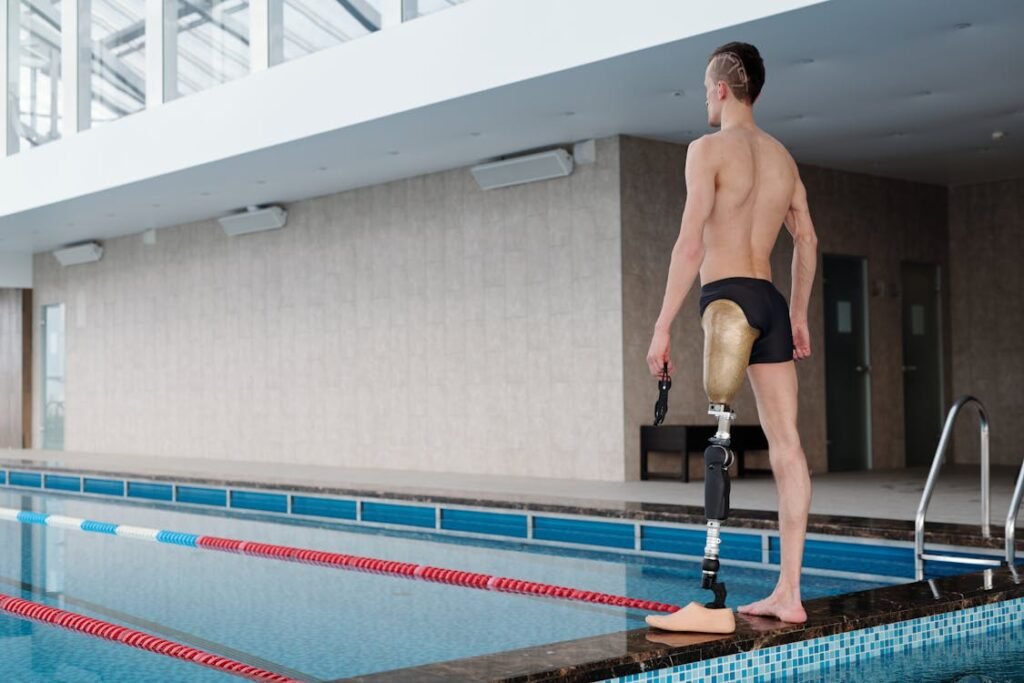
Choosing the Right Bionic Prosthetic for Durability and Water Resistance
Selecting a bionic prosthetic that aligns with a user’s lifestyle is crucial for long-term satisfaction and functionality. While all bionic limbs are designed to be durable, some models are better suited for specific environments and activities than others.
Understanding the different options available can help users make informed decisions about which prosthetic will best fit their daily needs.
Matching a Prosthetic to Your Lifestyle
For individuals who live an active lifestyle, durability becomes a top priority. Athletes, outdoor enthusiasts, and those who work in physically demanding environments require prosthetics that can withstand high-impact activities.
Some bionic limbs are designed with reinforced joints and shock-absorbing technology, allowing them to endure rigorous use. These models are often tested under extreme conditions to ensure they remain reliable during movement-intensive tasks.
For individuals who frequently encounter water, choosing a water-resistant or fully waterproof prosthetic is essential.
Users who swim, work in wet environments, or engage in water sports should look for a prosthetic with a high IP rating, ensuring it can handle submersion or splashes without damage.
However, these specialized prosthetics may come at a higher cost, so balancing durability with affordability is an important consideration.
Understanding the Trade-offs Between Durability and Comfort
While durability is important, comfort should never be overlooked. A prosthetic that is built for extreme durability may be slightly heavier than a standard model, which can impact long-term wearability.
Users should find a balance between strength and ease of use, ensuring that their prosthetic is both tough enough for daily activities and comfortable enough for extended wear.
Another factor to consider is adjustability. Children and young adults who are still growing will need prosthetics that can be easily modified to accommodate changes in size.
Some high-quality bionic limbs come with modular components that allow for adjustments without needing a full replacement. These features extend the lifespan of the prosthetic and provide a better long-term investment.
The Importance of Reliable Customer Support
No matter how durable a prosthetic is, occasional repairs and adjustments will be necessary over time. Choosing a manufacturer with strong customer support ensures that users receive the maintenance and guidance they need when issues arise.
Robobionics provides fast and reliable servicing, allowing users to get repairs and adjustments without long wait times. Having a dedicated support system helps prosthetic users feel more secure in their investment, knowing that assistance is readily available when needed.
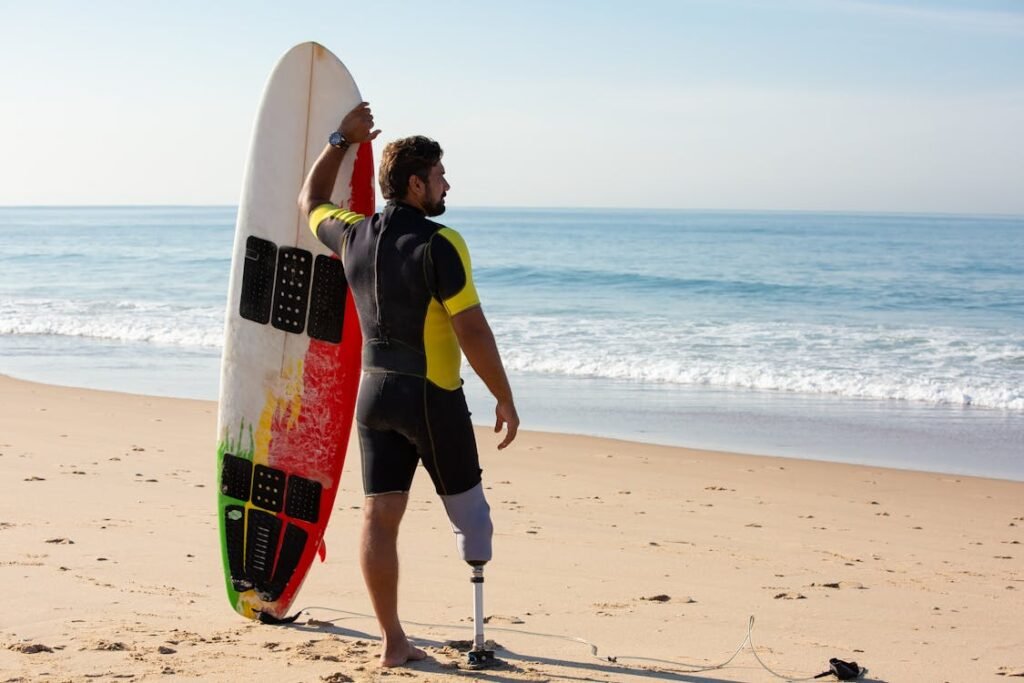
The Future of Waterproof and Durable Bionic Prosthetics
As technology continues to advance, the future of bionic prosthetics is becoming even more promising.
Manufacturers are constantly working on improving durability, water resistance, and overall functionality to create prosthetics that seamlessly integrate into everyday life.
Innovations in materials, engineering, and smart technology are driving the development of prosthetics that are more resilient, adaptable, and user-friendly.
Advancements in Waterproofing Technology
One of the biggest areas of progress is in waterproofing. While many current bionic limbs are water-resistant, future models aim to be fully waterproof without sacrificing weight or flexibility.
Scientists and engineers are exploring new materials that repel water at a microscopic level, ensuring that no moisture can enter the sensitive electronic components.
Some research teams are even developing self-healing coatings that can automatically repair small cracks or wear in protective layers, further enhancing a prosthetic’s lifespan.
The integration of completely sealed electronic compartments is another step toward making waterproof prosthetics more common.
Advances in nano-coating technology are being explored to create ultra-thin protective layers that shield internal components from moisture without adding bulk to the limb.
These breakthroughs could eventually make it possible for all bionic limbs to be fully waterproof, allowing users to swim, shower, and engage in water-related activities without concern.
Stronger and More Impact-Resistant Materials
Material science is also playing a significant role in increasing the durability of bionic limbs. Graphene-infused composites, for example, are being tested as an alternative to carbon fiber and titanium.
These materials offer even greater strength while remaining incredibly lightweight. The goal is to create prosthetics that can endure extreme conditions without adding unnecessary weight, making them ideal for users with active lifestyles.
In addition to stronger external materials, internal durability is improving as well. Advances in motor efficiency, energy distribution, and impact-resistant circuit designs are allowing prosthetic limbs to withstand greater forces without malfunctioning.
These innovations mean that future prosthetics will be less prone to mechanical failures, requiring fewer repairs and offering a longer lifespan for users.
Artificial Intelligence and Smart Prosthetic Adaptation
Bionic prosthetics are also becoming smarter in how they adapt to different conditions. Some advanced prototypes feature real-time environmental sensors that can detect moisture, temperature changes, or sudden impacts.
These sensors allow the prosthetic to adjust its resistance, grip strength, or movement patterns based on the situation, preventing unnecessary strain on the device.
For example, if a user walks into the rain, a smart prosthetic could automatically activate internal protective barriers, ensuring that no water-sensitive components are exposed.
If the user suddenly encounters a slippery surface, the limb could adjust grip strength in response. These intelligent features make prosthetics more responsive and intuitive, offering a natural and effortless experience for the user.
The Growing Accessibility of Durable and Waterproof Prosthetics
As technology improves, the cost of high-quality prosthetics is gradually decreasing. More manufacturers, including Robobionics, are focusing on creating affordable yet durable prosthetic options that do not compromise on performance.
The goal is to make waterproof and impact-resistant prosthetics more accessible to a wider range of users, ensuring that more people can benefit from these advancements.
With continued research, development, and investment in prosthetic technology, the future looks bright for those who rely on bionic limbs.
Whether it’s stronger materials, enhanced waterproofing, or AI-driven adaptability, these innovations will ensure that prosthetic users can lead active, independent lives without limitations.
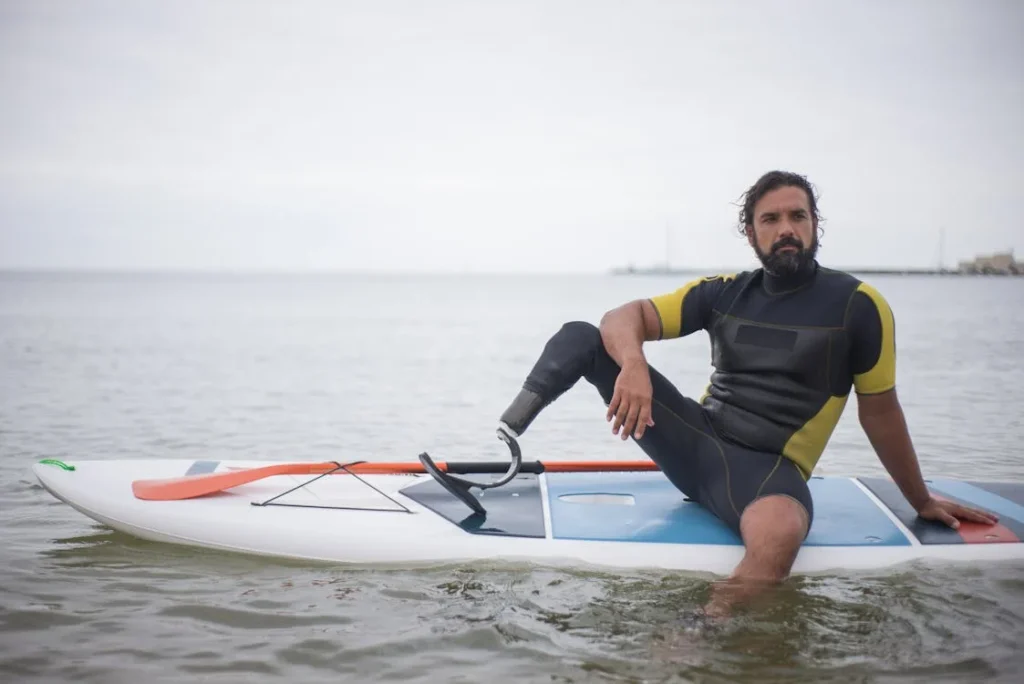
How Users Can Maximize the Lifespan of Their Bionic Prosthetic
While advancements in technology are making bionic prosthetics more durable and water-resistant, users still play a crucial role in ensuring their device remains in peak condition.
Proper care, maintenance, and mindful use can significantly extend the lifespan of a prosthetic, reducing the need for frequent repairs or replacements.
Developing a Care Routine
A daily routine for prosthetic maintenance can prevent minor issues from turning into major problems. Wiping down the limb at the end of each day removes dust, dirt, and moisture that may have accumulated.
For prosthetics that come into contact with sweat, such as those worn during exercise, cleaning the socket and liner is particularly important to maintain hygiene and prevent skin irritation.
Users should also be mindful of their environment. While many modern bionic limbs can handle occasional water exposure, it’s always best to dry off any damp areas immediately.
If a prosthetic is accidentally submerged in water and is not designed to be fully waterproof, turning it off and allowing it to dry completely before attempting to use it again can prevent electrical damage.
Avoiding Excessive Wear and Tear
Even the most durable bionic limbs have limits. Activities that involve excessive force, sudden impacts, or extreme pressure can strain the prosthetic’s joints and motor systems.
Users should be aware of their prosthetic’s strength limitations and avoid high-impact activities unless their limb is specifically designed for them.
For those who participate in sports or physically demanding jobs, consulting with a prosthetist about specialized models or protective reinforcements can ensure they have a prosthetic that meets their needs.
Some users choose to have a second prosthetic for heavy-duty use while keeping their primary limb for everyday activities.
Battery and Power Management
Since most bionic limbs operate on rechargeable batteries, managing power correctly can help maintain performance. Users should charge their prosthetic according to manufacturer guidelines, avoiding both overcharging and complete battery drainage.
Storing a prosthetic with a partially charged battery when not in use for extended periods helps preserve battery life.
Understanding the warning signs of a failing battery—such as decreased usage time or inconsistent movement—can help users identify when a replacement is needed.
Some advanced bionic limbs offer smart battery monitoring, alerting users when their power levels are low and providing real-time feedback on performance.
Regular Check-Ups and Professional Servicing
Just like any piece of high-tech equipment, bionic prosthetics benefit from routine inspections by professionals. Regular visits to a prosthetist allow for early detection of wear and tear, ensuring that any necessary adjustments or repairs are made before issues arise.
Many prosthetic manufacturers, including Robobionics, provide maintenance services to keep limbs functioning optimally.
Users should also report any unusual performance changes immediately. If a prosthetic starts making unexpected noises, loses responsiveness, or shows physical signs of damage, seeking expert assistance can prevent further complications.
Conclusion
Bionic prosthetic limbs are becoming more durable and water-resistant, making them more reliable for everyday use. Advances in materials, engineering, and smart technology have allowed these devices to withstand greater physical demands while offering users enhanced mobility and confidence. However, while some prosthetics are water-resistant, not all are fully waterproof, and users must understand their device’s limitations to prevent damage.
Proper maintenance, careful handling, and routine check-ups play a crucial role in maximizing the lifespan of a bionic limb. By keeping the prosthetic clean, managing battery usage, and avoiding unnecessary wear and tear, users can ensure long-term performance and comfort. Manufacturers like Robobionics continue to push the boundaries of innovation, creating prosthetics that are not only functional but also resilient in real-world conditions.
If you’re considering a bionic limb or need guidance on finding the right prosthetic for your lifestyle, contact Robobionics today. Our team is dedicated to providing advanced, durable prosthetics that empower users to live actively and confidently, no matter where life takes them!



